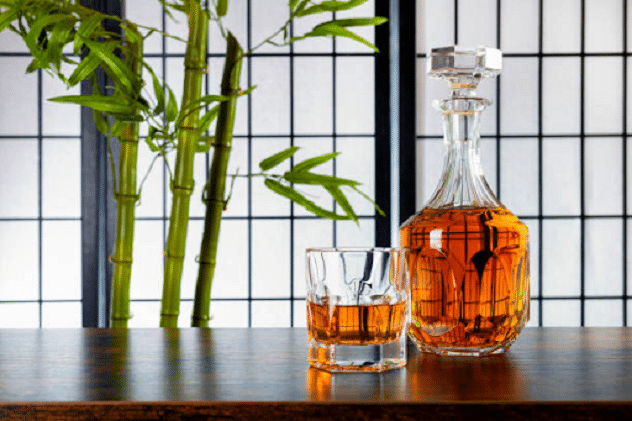Japanese whiskey
Japanese whiskey emerged in the early 20th century, heavily influenced by Scottish traditions. Pioneers like Masataka Taketsuru studied distillation techniques, leading to a distinctive blend of craftsmanship and local ingredients.
Whiskey in Japan
Japanese whiskey has captured the imagination of spirit enthusiasts worldwide, emerging as a distinctive and refined category that balances tradition with innovation. Inspired by Scotland’s renowned whisky-making techniques, Japanese distillers incorporate local ingredients, water sources, and cultural philosophies. Japan’s whiskey industry began in the early 20th century, with pioneers like Masataka Taketsuru studying Scottish methods. Today, renowned brands like Yamazaki, Nikka, and Hakushu are internationally recognized for their exceptionally smooth, multi-layered whiskies.
Characterized by meticulous attention to production details—from sourcing pure mountain spring water to artfully blending various cask types—Japanese whisky embodies elegance and complexity. Whether enjoyed neat or in sophisticated cocktails, each sip tells a story of craftsmanship honed over decades.
Evolution and growth in the whiskey industry
The whiskey industry has undergone significant evolution, marked by innovative distillation techniques, a rise in craft distilleries, and diverse flavour profiles catering to evolving consumer preferences globally.
Japanese whiskey in the global market
Japanese whisky plays a significant role in the global market, garnering attention for its craftsmanship and unique flavours. Its growing popularity has cemented Japan’s position as a premier whiskey-producing nation.
Influence of traditional brewing techniques
Traditional brewing techniques significantly shape regional flavours, promote community engagement, and preserve cultural heritage. By using time-honoured methods, brewers emphasize authenticity while fostering a deeper connection between consumers and local traditions.
Scottish and Japanese methods
Scottish and Japanese methods differ in approach. Scotland emphasizes tradition and community involvement, while Japan focuses on precision, innovation, and efficiency. These cultural distinctions influence their practices across various disciplines.
Location and environment
Location and environment play a critical role in shaping resources, climate, accessibility, and community dynamics. These factors significantly affect the quality of production and sustainability, contributing to the overall flavour profiles of the whiskey.
Delve into the distinct flavour.s
Explore the unique taste profiles found in Japanese whiskey, each offering a rich tapestry of flavours that will surprise and enticSavouringing these distinct characteristics elevates your tasting experience.
Local ingredients on taste
Local ingredients, including water sourced from Japan’s pristine landscapes, significantly influence flavour profiles. The availability of these ingredients reflects regional agricultural practices, resulting in authentic and unique whiskey experiences.

Types of Japanese Whiskey
Japanese whiskey comes in various styles, including single malts, blended whiskeys, and grain varieties. Each type offers unique flavours and characteristics that reflect Japan’s rich distilling heritage.
The Key Distilleries in Japan
Japan’s whiskey distilleries have gained global recognition for their exceptional quality, craftsmanship, and unique flavour profiles. These distilleries blend traditional Scottish techniques with local ingredients, creating whiskeys that are not just drinks, but works of art.
Emerging into the international spotlight in recent years, brands like Yamazaki, Hibiki, and Nikka have captivated connoisseurs with their delicate balance of flavours, from fruity and floral to rich and smoky. The use of pure mountain water contributes significantly to the refinement of these expressions.
Highlight their distinct styles.
Each distillery employs unique methods, setting them apart from others. Their styles reflect personal choices and creativity, contributing to a diverse and rich tapestry of flavours in the whiskey industry.
Contribution of these distilleries to the whiskey industry
Japanese distilleries play a vital role in producing unique, high-quality spirits. Their innovation and craftsmanship help maintain diverse flavour profiles while promoting local economies and preserving heritage traditions.
Japanese Whiskey Tasting Notes
To assess the aroma of Japanese whiskey, start by sniffing at different distances from the glass. Identify the subtle scents that reveal the whiskey’s complexity. Practice and repetition enhance your ability to perceive a wide array of aromas.
Techniques on tasting and appreciating
Tasting involves fully engaging your senses—focusing on aroma, texture, and the nuances of flavour. Take small sips, allowing time to savour each element for a deeper appreciation of the whiskey’s complexities.
Decoding various flavours and finishes
Japanese whiskey offers a diverse range of tastes, each with its unique finish. Understanding these nuances can elevate your appreciation, making each tasting session a journey through complex and delightful flavour profiles.
Popular Japanese Whiskey Labels
Explore the prestigious Japanese whiskey labels like Yamazaki, Hibiki, and Nikka. These brands stand out for their unique characteristics, craftsmanship, and global recognition.
Individual characteristics and unflavoured profiles
Each whiskey label offers distinctive traits, influenced by the ingredients, distillation process, and aging methods used. Understanding these profiles helps whiskey enthusiasts choose the perfect bottle for their palate.
Recommendations for both beginners and connoisseurs
For beginners, try foundational labels such as Suntory’s Yamazaki 12 or Nikka’s Coffey Grain. For more experienced connoisseurs, explore rare, limited-edition bottles or older expressions that highlight the depth of Japanese whiskey craftsmanship.
Pairing Japanese Whiskey with Food
Pairing whiskey with food enhances both the drink and the dish. Thoughtful combinations can elevate dining experiences by highlighting the intricacies of each component.
Examples of the best food pairings
Japanese whiskey pairs excellently with foods like sushi, grilled meats, and dark chocolate. These combinations complement the whiskey’s delicate sweetness, smoky notes, and smooth finish.
Tips on how to create a well-rounded tasting session
Craft an engaging tasting session, and incorporate a variety of flavours and textures. Select complementary food pairings, set a comfortable atmosphere, and encourage discussion to deepen your appreciation of each element.
The most renowned Japanese whiskey is Yamazaki, celebrated for its rich flavour and craftsmanship. It’s produced by the oldest malt distillery in Japan and has gained international acclaim for embodying the essence of Japanese whiskey culture.
Japanese whiskey stands out due to its meticulous crafting process, blending traditional Scottish methods with local ingredients. Itflavoursrs are known for their delicate sweetness and intricate profiles, showcasing Japan’s artistry in distilling.
Japanese whiskey’s excellence stems from its meticulous craftsmanship, blending Scottish traditions with local ingredients. The result is a smooth, diverse spirit with an unparalleled depth of flavour and balance.
Japanese whiskey can be expensive due to limited production, careful craftsmanship, high demand, ageing processes, and the prestige of renowned distilleries. These factors increase the price, especially in global markets.



